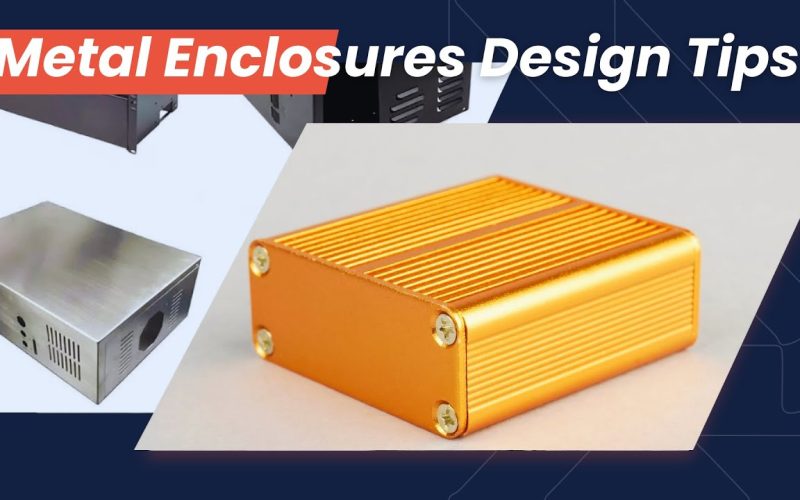Introduction
In the world of electronics, protection, performance, and precision are essential. One of the most effective ways to safeguard electronic components is by using a Sheet Metal Enclosure. These enclosures provide a durable and adaptable housing solution that can withstand the challenges of various environments. Whether for consumer electronics, industrial machinery, or telecom systems, sheet metal enclosures offer multiple advantages that enhance both functionality and longevity.
Below are the top five benefits of using sheet metal enclosures in electronic applications.
Top 5 Benefits of Using a Sheet Metal Enclosure in Electronics
1. Superior Protection and Durability
One of the most significant advantages of using a sheet metal enclosure is its ability to protect sensitive electronics from environmental hazards. Electronics are often exposed to dust, moisture, vibration, and temperature fluctuations. Sheet metal, typically made from steel, stainless steel, or aluminum, offers a tough barrier against these elements.
The rigidity of metal ensures that the enclosure resists physical impacts and mechanical stress. Unlike plastic alternatives, metal enclosures are less likely to crack or degrade over time, especially in industrial or outdoor settings. This high level of protection helps to extend the lifespan of electronic components and reduce maintenance or replacement costs.
2. Excellent Electromagnetic Interference (EMI) Shielding
Electromagnetic interference can cause significant problems in electronic systems, affecting their performance or leading to complete failure. Metal enclosures naturally provide excellent shielding against EMI, a crucial factor in electronics used in communication, medical devices, and data processing systems.
Because metals are conductive, they can absorb and block external electromagnetic signals, preventing interference with the internal circuitry. Additionally, they contain the signals generated within the device, preventing it from interfering with nearby electronics. This dual protection ensures optimal performance and compliance with strict electromagnetic compatibility (EMC) standards.
3. Customization and Design Flexibility
Sheet metal enclosures offer an impressive level of design flexibility. They can be cut, bent, stamped, or welded into a variety of shapes and sizes to meet the exact specifications of a project. This makes them ideal for custom-built systems where standard enclosures may not fit or provide the necessary features.
Openings for cable management, display windows, ventilation slots, or mounting points can be precisely engineered into the design. Finishes such as powder coating, anodizing, or painting can also be applied to match the aesthetic or environmental requirements of the final product. This versatility enables engineers to optimize the enclosure for functionality, performance, and appearance.
4. Heat Dissipation Efficiency
Heat management is a critical consideration in electronics design. Excessive heat can degrade performance, reduce component life, and lead to system failure. Sheet metal enclosures naturally aid in heat dissipation due to their thermal conductivity. Materials like aluminum are particularly effective at transferring heat away from internal components.
Additionally, designers can incorporate passive cooling elements into the enclosure design, such as ventilation slots or integrated heat sinks. These features help to maintain a stable internal temperature without relying heavily on fans or other active cooling solutions, improving energy efficiency and reducing noise.
5. Cost-Effective for High-Volume Production
While the initial tooling for custom sheet metal enclosures may require some investment, the overall cost becomes highly competitive in large-scale production. The manufacturing processes—such as laser cutting, CNC machining, and stamping—are well-suited for high-volume, repeatable fabrication.
Material availability and recycling potential also contribute to the cost-effectiveness of sheet metal enclosures. Metals like aluminum and steel are abundant and recyclable, making them a sustainable choice. Over time, the durability and reduced maintenance requirements of these enclosures also result in lower total ownership costs compared to alternatives that may wear out or fail prematurely.
Choosing the Right Sheet Metal Enclosure
Picking the perfect enclosure involves balancing several factors:
- Material Choice: Steel offers strength; aluminum adds weight savings and corrosion resistance.
- Size and Mounting: Ensure enough internal space and options for wall, rack, or DIN-rail mounting.
- Environmental Rating: Look for IP or NEMA ratings that match your dust and water-resistance needs.
- Ventilation Needs: Determine if passive vents suffice or if you need fan cutouts.
By matching enclosure specs to your project requirements, you get the best mix of protection, cooling, and usability.
Maintenance and Care Tips
To keep your sheet metal enclosure in top shape:
- Regular Cleaning: Wipe off dust and debris with a soft cloth.
- Inspect Seals: Check gaskets and screws for tightness to maintain water and dust protection.
- Touch-Up Paint: Repair any scratched powder-coat surfaces to prevent rust on steel models.
- Ground Connection: Verify the enclosure remains properly grounded to uphold EMI shielding.
A little routine care extends enclosure life and preserves the safety of your electronics.
Conclusion
In conclusion, the use of sheet metal enclosures in electronics brings a combination of protection, reliability, and adaptability that is hard to match. From shielding against environmental threats and electromagnetic interference to supporting thermal management and efficient manufacturing, these enclosures are a smart investment for any electronic application. When properly designed and fabricated, they can play a key role in ensuring the safety, performance, and longevity of the systems they protect.












